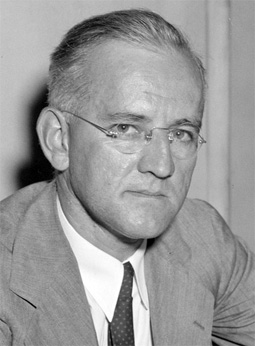| Profile | Major Works | Resources |
Lauchlin B. Currie, 1902-1993

Canadian-US economist, government advisor and proto-Monetarist
economist.
Lauchlin Bernard Currie was born in Nova Scotia, Canada. He enrolled briefly at St Francis Xavier University, Nova Scotia, but finding its economic pickings scant, moved to England and enrolled at the LSE.in 1922. After graduating in 1925, Currie proceeded to pursue his Ph.D at Harvard university, producing a well-regarded thesis in 1931, which led to his celebrated 1934 treatise, considered a classic of early Monetarist thought.
Currie stayed on as a teacher at Harvard until 1934, when, failing to achieve tenure, Currie was drafted by Jacob Viner to join the US Treasury, taking up US citizenship in the process. He proceeded to work as a researcher at the Federal Reserve Board.
In 1939, Lauchlin B. Currie was appointed as special economic advisor to US president Franklin Delano Roosevelt. He served in that capacity for the duration of World War II. He was involved with the Lend-Lease Program with China, personally leading important American missions to Chiang Kai-shek in 1941 and 1942. He also led the American delegation to the Bern conference in 1945.
Currie resigned from the government after 1945, and after a period as a private consultant, joined a World Bank mission to the Colombian government in 1949. In the early 1950s, Currie was targeted by McCarthyites, and lost his US citizenship in 1954, thereafter moving permanently to Bogota,Colombia and taking up Colombian citizenship.
|
Major Works of Lauchlin Currie
|
|
HET
|
|
Resources on L.B. Currie
|
All rights reserved, Gonšalo L. Fonseca
